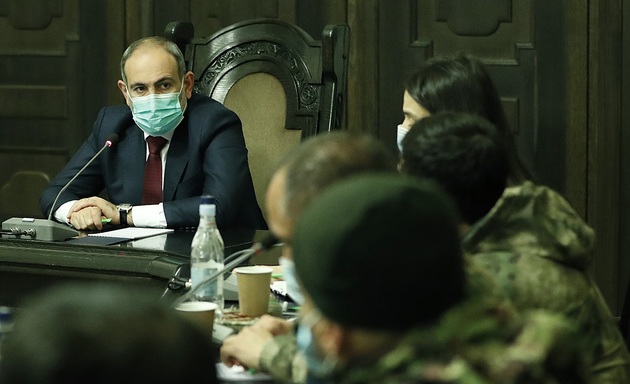Armenia has been riven by disputes over its leadership since its military defeat by Azerbaijan last fall. Newly called elections are unlikely to reconcile the divisions in Armenian society caused by the battlefield losses, Célestine Bohlen, a US journalist, writes for the Council on Foreign Relations.
Armenian Prime Minister Nikol Pashinyan has called for early elections after weeks of protests and a standoff with his own army. What’s going on? Pashinyan, Armenia’s forty-five-year-old prime minister who was elected in 2018 on the back of a so-called Velvet Revolution, is banking on early elections set for June 20 to quell a political crisis that has its roots in Armenia’s bitter defeat in a forty-four-day war with neighboring Azerbaijan last year.
Pashinyan himself triggered the crisis on February 23, when he suggested in a TV interview that Iskander missiles provided to Armenia by Russia had underperformed during the war. When a senior military official scoffed at these remarks, Pashinyan fired the official, only to find himself publicly challenged by the chief of the general staff and some forty top military officers, all of whom demanded his resignation.
Defying what he called a military “coup d’état,” Pashinyan summoned his supporters to the streets of the capital, Yerevan, to face off against demonstrators calling for his ouster. The rival protests came to a head on March 9, when the opposition—a coalition of sixteen parties— barricaded the parliament building.
The debate about the performance of the Russian missiles was beside the point. (Moscow denied they were even used.) The main issue is Pashinyan’s leadership during the war and his continued defense of the tripartite cease-fire agreement brokered by Russia. That deal forced Armenia to cede Azerbaijani territory seized almost thirty years ago, after the first war over the disputed region of Nagorno-Karabakh. Major opposition parties signed off on Pashinyan’s March 18 announcement of early elections, but some minor parties vowed to continue their protests, pressing for the formation of an interim government ahead of the balloting in June.
What is at stake if the country’s political crisis continues?
Prolonged instability in Armenia could endanger the fragile truce that went into effect on November 10. Even if Pashinyan’s government survives the June elections, his authority has been damaged, and opposition to the truce negotiated last November remains high. Tensions in the Nagorno-Karabakh region peaked again in recent weeks as both Armenia and Azerbaijan announced on relatively short notice that they were conducting large-scale military exercises. The first war over the disputed region of Nagorno-Karabakh began in 1991 as the Soviet Union was collapsing. The victorious Armenian army not only liberated the disputed region of Nagorno-Karabakh, but also occupied seven surrounding Azerbaijani districts as a buffer zone. The land grab led to an exodus of some 250,000 Azerbaijanis, whose displacement remained a festering wound for the next three decades. Last November, after Azerbaijani forces overwhelmed the Armenian military with help from drones provided by its ally Turkey, Azerbaijan took back the seven districts, plus one-third of the so-called Republic of Nagorno-Karabakh.
Has Russia gained influence over Armenia and the region since brokering the peace deal?
Russia has been widely credited with bringing last year’s war to an end, an achievement that will allow it to keep its peacekeepers in the region for at least five years. This has assured Moscow a major role in the region’s future. But Russia now has to maintain a delicate balance in its relations with both Armenia and Azerbaijan, a difficult task given that the status of Nagorno-Karabakh remains unresolved. And although Moscow’s influence has increased, so too has its vulnerability because of the position of its peacekeepers, who are in both Armenia-controlled Nagorno-Karabakh and the critical Lachin Corridor, now back under Azerbaijani control, that links the disputed region with Armenia.






